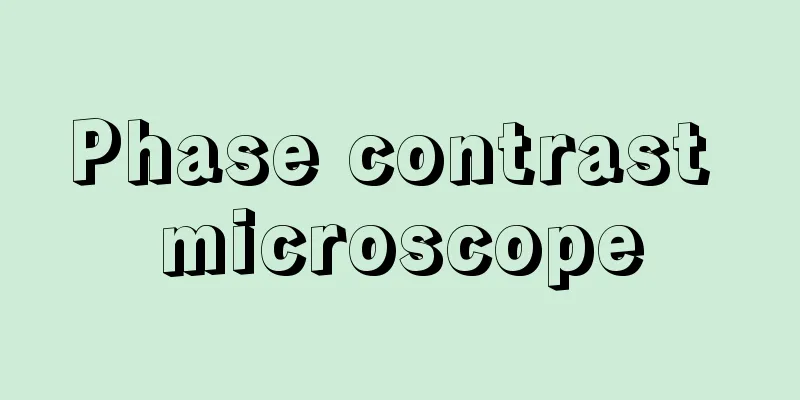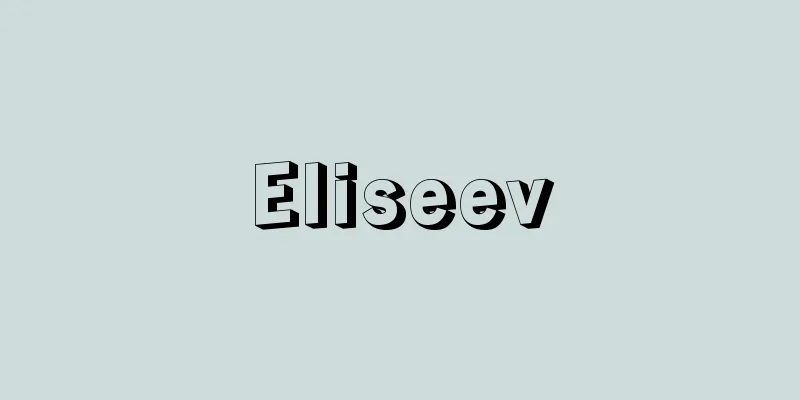Phase contrast microscope

|
Even if there are minute differences in the refractive index (or thickness) of an object, these only change the phase of the transmitted light and are invisible to the eye. This microscope converts these phase differences into differences in brightness and allows observation. It was invented in 1935 by the Dutch physicist Zernike. As shown in , an annular slit R is placed on the front focal plane of the focusing lens C, and an annular phase plate P is placed on the rear focal plane of the objective lens L so that it overlaps exactly with the image of R formed at this position. This phase plate gives a phase delay of π/2 or 3π/2 to the light that passes through the annular part. If an object O is placed in the position shown in the figure, the light that passes through the part of the object with a uniform refractive index continues to travel without changing its direction, and when it passes through the annular phase plate P, the aforementioned phase delay occurs. In contrast, the light that passes through the part of the object with a different refractive index has its direction changed by the phenomenon of diffraction, and passes through the part other than the annular part of the phase plate without being given a phase delay. These lights come together at the position of the image O' of object O formed by L, and as a result of interference, the difference in phase is converted into a proportional difference in brightness. This image is further magnified and observed through an eyepiece. When a π/2 phase plate is used, the parts of the object with a positive refractive index change are observed as bright, and when a 3π/2 phase plate is used, they are observed as dark, so they are called positive and negative phase contrast, respectively. In order to observe transparent biological specimens using a normal microscope, the specimen must first be stained to change its brightness, whereas a phase-contrast microscope is unique in that the specimen is used as is. [Tanaka Shunichi] [Reference] |©Makoto Takahashi Principle of phase contrast microscope (Diagram) Source: Shogakukan Encyclopedia Nipponica About Encyclopedia Nipponica Information | Legend |
|
物体上に微細な屈折率(または厚さ)の相違があっても、これは透過光の位相を変えるだけで目には見えないが、この位相の相違を明るさの相違に変えて観察できるようにした顕微鏡。1935年、オランダの物理学者ゼルニケによって発明された。に示すように、集光レンズCの前側焦点面に環状のスリットRを、また対物レンズLの後ろ側焦点面に、この位置にできるRの像にちょうど重なるように環状の位相板Pを置く。この位相板は環状部分を通過する光にπ/2または3π/2の位相遅れを与えるものである。物体Oを図の位置に置くと、物体の屈折率が一様な部分を通過する光は、進行方向を変えないでそのまま進み、Pの環状の位相板を通るとき前述の位相遅れを生ずる。これに対して物体上の屈折率が相違している部分を通過する光は、回折の現象でその進行方向が変えられ、位相板の環状の部分以外を通って、位相遅れを与えられることなく進む。これらの光は、Lによってつくられる物体Oの像O'の位置でいっしょになり、干渉の結果、位相の相違がこれに比例した明るさの相違に変えられる。この像は接眼レンズでさらに拡大されて観察される。π/2の位相板を用いるものでは物体上の屈折率変化が正の部分が明るく、3π/2のものでは暗く観察されるので、それぞれ正および負の位相コントラストとよばれる。 透明な生物標本などを普通の顕微鏡で観察するためには、あらかじめ標本を染色して明るさの相違に変えておく必要があるのに対して、位相差顕微鏡では標本がそのまま用いられるのが特徴である。 [田中俊一] [参照項目] |©高橋 真"> 位相差顕微鏡の原理〔図〕 出典 小学館 日本大百科全書(ニッポニカ)日本大百科全書(ニッポニカ)について 情報 | 凡例 |
Recommend
Jammu and Kashmir (English spelling)
...The border with China on the Indian side remai...
lokadhātu (English spelling) lokadhatu
...Originally a Buddhist term, it means the space...
Hurban, S.
…A Central European republic that existed from 19...
Root of the sugarcane
…It is found from southern Hokkaido to the Ryukyu...
Geumseong (Korea)
...Population: 116,322 (1995). In 1981, the cente...
Takeno [town] - Takeno
A former town in Kinosaki County in northern Hyogo...
Badger (Old World badger)
A carnivorous mammal of the Mustelidae family (ill...
Wittewael, J.
...However, this was only in Rome; in Florence, s...
Kirifuri Plateau - Kirifuri Plateau
A plateau on the southeastern foot of Mt. Nyoho a...
Vertebrates - Vertebrates
In animal classification, a group of animals that...
Pope Johannes XXIII (English spelling)
…Leo XIII (1878-1903) opened a close relationship...
The right to education
The Constitution of Japan stipulates that "A...
Church Music
In the narrow sense, it means music used in Chris...
Viburnum japonicum (English spelling)
…[Mr. Makoto Fukuoka]. … *Some of the terminology...
Seal of Incorporation - Katanashi Shoin
…There were two offices of the Yuseisho: the Kan ...









